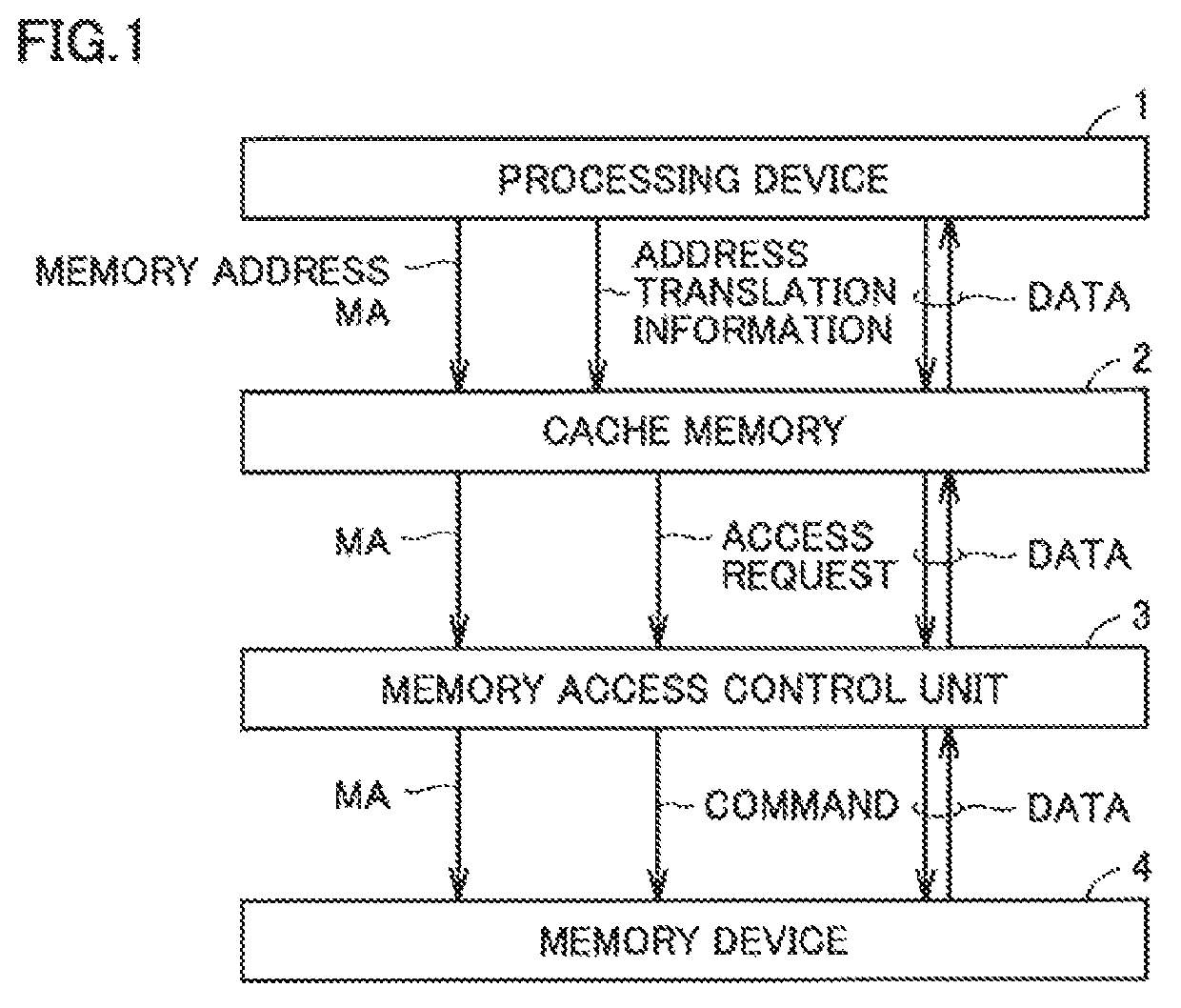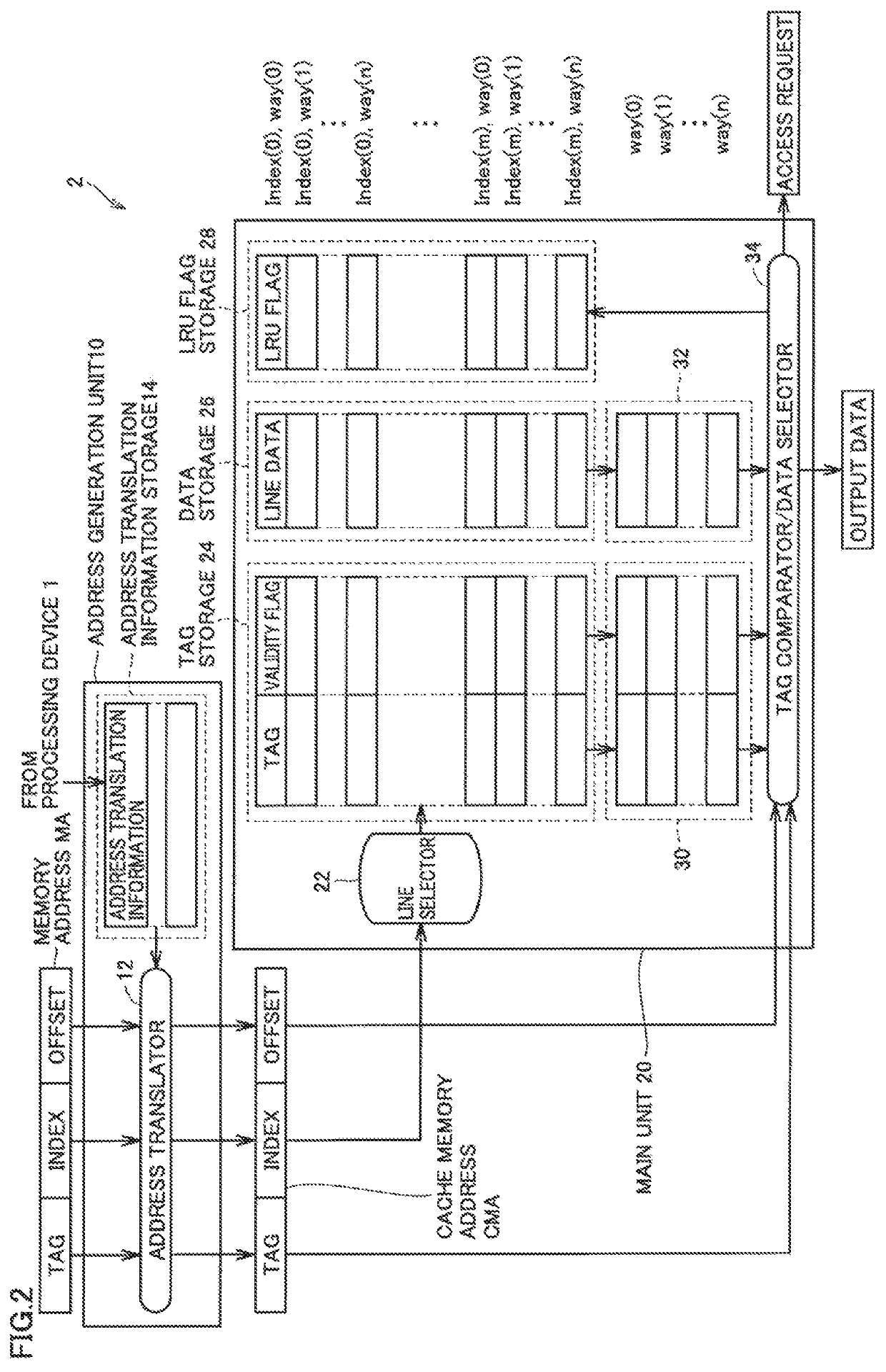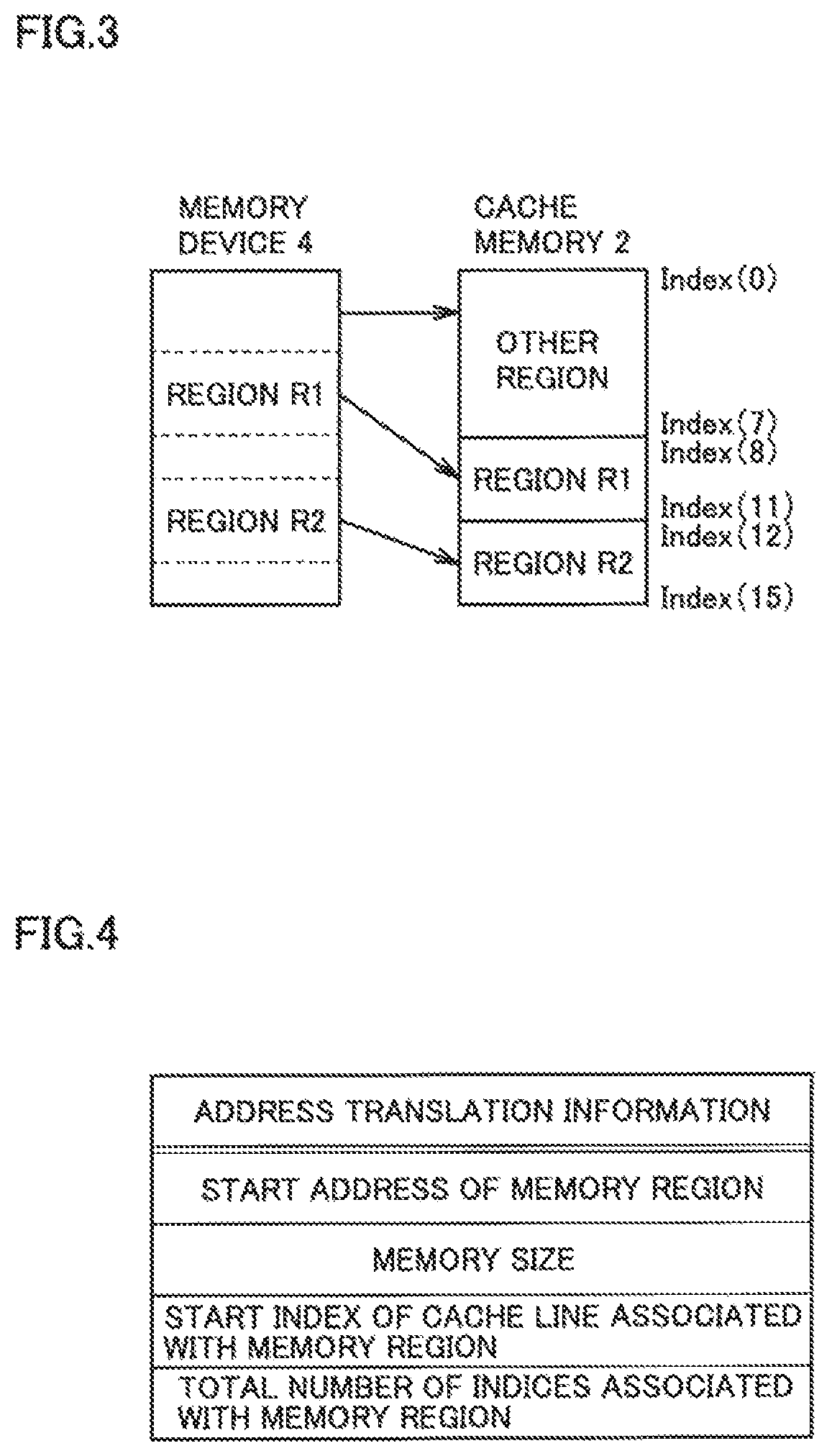Cache memory and method for controlling the same
a technology of cache memory and memory access, applied in the field of cache memory, can solve the problems of data reusability low, slow memory access speed, bottleneck of processor performance, etc., and achieve the effect of high reusability, high reusability and high reusability
- Summary
- Abstract
- Description
- Claims
- Application Information
AI Technical Summary
Benefits of technology
Problems solved by technology
Method used
Image
Examples
embodiment 1
[0039][One Example of Information Processing Apparatus]
[0040]FIG. 1 is a block diagram showing one example configuration of an information processing apparatus in which a cache memory according to Embodiment 1 is implemented. The configuration of the information processing apparatus of FIG. 1 is also applicable to Embodiments 2 and 3. Referring to FIG. 1, the information processing apparatus includes a processing device 1, a cache memory 2, a memory access control unit 3, and a memory device 4.
[0041]Processing device 1 may be a part of a processor for executing programmed instructions, or a circuit that is built using an ASIC (Application Specific Integrated Circuit) or a FPGA (Field Programmable Gate Array).
[0042]Memory device 4 holds data for processing by processing device 1. Memory device 4 corresponds to a main memory of a microcomputer. Memory device 4 is configured of a general-purpose DRAM (Dynamic Random Access Memory), for example.
[0043]Cache memory 2 is a high-speed memor...
embodiment 2
[0105]Embodiment 2 will be described with reference to the mapping scheme of the cache memory being the direct mapping.
[0106]FIG. 9 is a block diagram showing one example configuration of a cache memory according to Embodiment 2. Cache memory 2A of FIG. 9 is different from cache memory 2 of FIG. 2 with respect to the configuration of main unit 20A. Specifically, cache lines in main unit 20A are not provided with ways associated with respective indices, and, additionally, main unit 20A does not include LRU flag storage 28. The rest of configuration of cache memory 2A of FIG. 9 is the same as cache memory 2 of FIG. 2. Thus, like reference signs refer to like or corresponding parts and the description thereof will not be repeated.
[0107]FIG. 10 is a flowchart showing an operation of the cache memory of FIG. 9. In the flowchart of FIG. 9, like reference signs refer to steps like or corresponding to those shown in the flowchart according to Embodiment 1, and the description thereof will n...
embodiment 3
[0115][Schematic Configuration of Cache Memory]
[0116]Embodiment 3 will be described with reference to the mapping scheme of a cache memory being fully associative mapping. FIG. 11 is a block diagram showing one example configuration of a cache memory according to Embodiment 3.
[0117]Referring to FIG. 11, in the case of the fully associative mapping, input memory address MA includes a tag in upper bits and an offset in lower bits, and is not provided with an index. Cache memory address CMA translated from input memory address MA by address translator 12 includes additional information corresponding to an index which is added between the tag and the offset. The additional information does not specify one index, but specifies a range of indices (the upper limit and the lower limit). Data and the tag can be stored in any cache line within this index range. This can limit the range of cache lines, according to a memory region to be accessed which is associated with memory address MA, ther...
PUM
 Login to View More
Login to View More Abstract
Description
Claims
Application Information
 Login to View More
Login to View More - R&D
- Intellectual Property
- Life Sciences
- Materials
- Tech Scout
- Unparalleled Data Quality
- Higher Quality Content
- 60% Fewer Hallucinations
Browse by: Latest US Patents, China's latest patents, Technical Efficacy Thesaurus, Application Domain, Technology Topic, Popular Technical Reports.
© 2025 PatSnap. All rights reserved.Legal|Privacy policy|Modern Slavery Act Transparency Statement|Sitemap|About US| Contact US: help@patsnap.com



